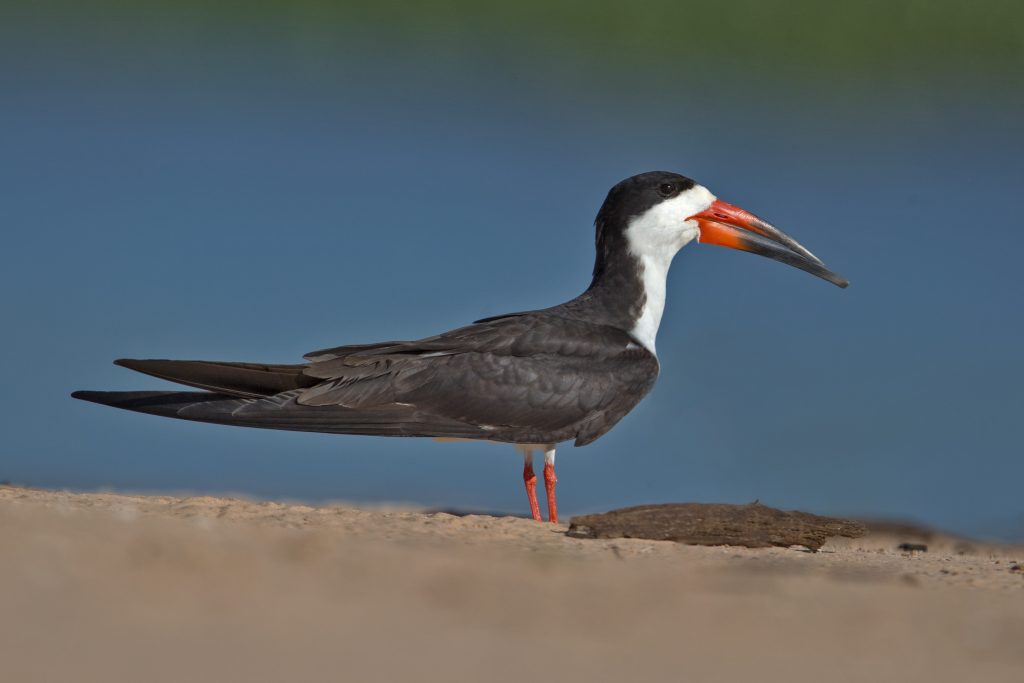Black Skimmer (Rynchops niger) is a sea-bird found in bays, inlets and coastal beach areas along the eastern, western and gulf coast of the United States and Mexico. Farther south they have sub-species cousins in central and South America. Starting the 20th Century highly threatened due to hunting and again negatively impacted by DDT in the middle of the century. In the last 20 years Black Skimmers have made a remarkable comeback and despite usually choosing prime beach real estate they are expanding their territory up both coasts of the United States. Black Skimmers can now be found as far north as Massachusetts in the East, the Bay Area of Northern California and the Salton Sea in the West.
If you are on the coast take the opportunity to look for Black Skimmers gracefully hunting- it is truly a sight to be seen.
Black Skimmers get their name from their striking two-tone plumage and low, over the water hunting technique. Appearance wise the Black Skimmer has a white underside and black back which extends to a cap that comes to the bottom of their eyes. Their beaks have a distinctive shape and are red at the base which fades to black nearer the tip. They have wide wingspans and when in flight look like elegant glider planes.
When on land Black Skimmers congregate in monogamous pairs as part of larger colonies and are often adjacent to Terns. The Terns provide a service to their Skimmer neighbors by raising a loud alarm if predators such as Coyotes appear. Black Skimmers will also make their homes on sand bars and islands as an extra safeguard against land based trespassers. A Black Skimmer’s nest is a simple depression made in the sand called a scrape. Their broods usually consist of three or four eggs and when the chicks hatch they have a mottled sandy brown appearance to blend in with the beach. The male and female Skimmer both rear their young, taking turns catching fish. The large ones the parents keep and the small fish are brought back to the scrape for feeding the young ones.
If you are on the coast take the opportunity to look for Black Skimmers gracefully hunting- it is truly a sight to be seen. The best time is at dusk when the surface of the water is smooth and glassy.
